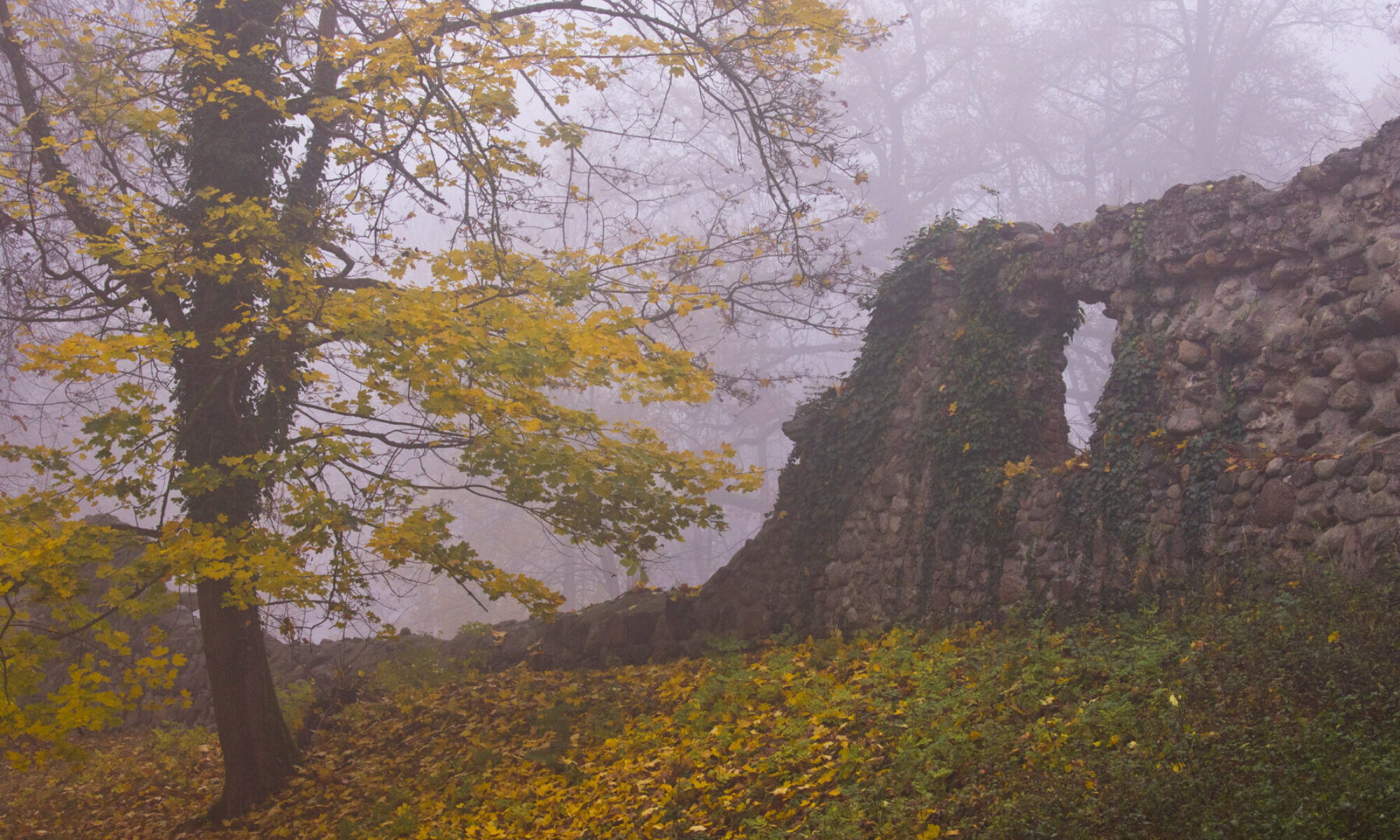Address: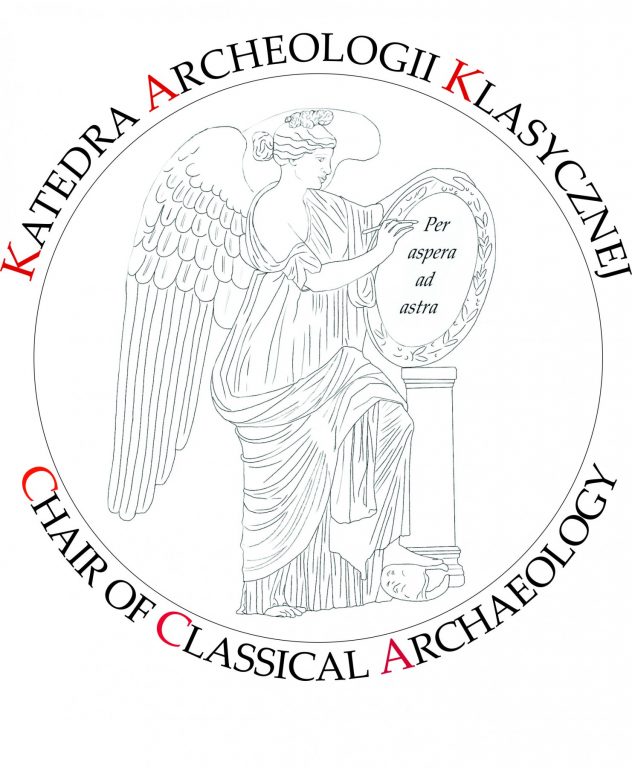
Chair of Classical Archaeology
Faculty of Archaeology
University of Warsaw
Szkoła Główna, pok. 317, 320
Krakowskie Przedmieście 26/28
PL 00-927 Warsaw
Head of the Department:
⇒ Prof. dr hab. Piotr DYCZEK contact: novae@uw.edu.pl
Staff:
⇒ dr hab. Renata-CIOLEK, prof. ucz. contact: renataciolek@uw.edu.pl
⇒ dr hab. Hubert KOWALSKI, prof. ucz. contact: hubert.kowalski@adm.uw.edu.pl
⇒ dr hab. Marek T. OLSZEWSKI contact: m.t.olszewski@uw.edu.pl
⇒ dr hab. Dariusz SZELĄG contact: daresz@uw.edu.pl
⇒ dr hab. Jerzy ŻELAZOWSKI contact: j.r.zelazowski@uw.edu.pl
⇒ dr Marzena ŁUSZCZEWSKA contact: m.luszczewska@uw.edu.pl
⇒ dr Marcin MATERA contact: marcinmatera@uw.edu.pl
⇒ dr Dagmara Wielgosz-Rondolino contact: dagmara.wielgosz@uw.edu.pl
Doctoral Students:
⇒ mgr Arkadiusz CEGLIŃSKI contact: a.ceglinski@uw.edu.pl
⇒ mgr Monika DUNAJKO contact: m.dunajko@uw.edu.pl
⇒ mgr Karolina RATAJ contact: k.rataj@uw.edu.pl
⇒ Jean-Francois GUAY
INFORMATION ABOUT THE DEPARTMENT:
Classical archaeology as a separate scientific discipline was a relative latecomer at the University of Warsaw. It was established in 1930 when Professor Kazimierz Michałowski moved to the capital. Poland already had established Departments of Classical Archaeology—at the Jagiellonian University in Kraków since 1897 and the University of Lviv since 1905—but teaching archaeology of the ancient Mediterranean cultures started to be institutionalized in Warsaw at a much earlier date. The first classes devoted to the ancient Greeks and Romans were offered already at the Royal University of Warsaw (1816–1831), with students of classical philology attending lectures on topics dealing with numismatics, epigraphy, ancient architecture and art, the topography of Rome, and public life of people in the Mediterranean world all through the 19th century. Interest in classical archaeology did not wane despite a complicated political situation and the university’s intermittent operation status. Teaching of ancient Greek and Roman history and material culture continued at the Main School, the Imperial University of Warsaw, and at the University of Warsaw once it was revived in 1915.
Rich didactic collections of antiquities, numismatics, engravings, drawings and architectural models, continuously added to by the professors from the founding of the university until the outbreak of World War II, played an important role in shaping classical archaeology as a discipline at the University. The Cabinet of Gypsum Models led the field in spreading knowledge about past cultures among students as well as residents of Warsaw. Its collection of casts of the most famous antique sculptures was presented in the Column Hall of the once museum building (now the History Faculty), supplemented with a library stocked extensively with books and slides used during classes (now in the Library of the Faculty of Archaeology). Also of great importance in sustaining interest in the study of past cultures was the Archaeological Cabinet, formed of the Numismatic Cabinet and the Museum of Antiquities in 1871.
The idea for a Department of Archaeology at the university was conceived in 1865, but it was not until 1930 that the unit was actually established. The Chair of Classical Archaeology (organized as a Department) officially began functioning in 1931 with Dr. Kazimierz Michalowski, already making a name for himself in the field, as its first head. Michałowski initiated the first Polish archaeological field research in the Mediterranean. The outbreak of World War II put a stop to the Department’s development.
Years later, a Department of Classical Archaeology was reinstated in the structure of the University’s Faculty of Archaeology, called up by decision of the Council on 25 November 2020 and operational from 1 March 2021. Its staff comprises specialists dealing with various aspects of classical culture from material culture to art to spiritual culture.
The Department brings together field archaeologists, epigraphers, numismatists, specialists in classical art and material culture. Research focuses on ancient Greece and Rome in its core territories as well as peripheries subject to Greek and Roman influence. The Department’s staff conducts excavations abroad and participates in Polish and foreign research projects, including European Union programs.
Teaching is an important part of the Department’s program, including student internships, exchanges under the Erasmus program for both staff and students, scientific supervision of bachelor’s, master’s and doctoral theses.
The Department effectively offers a broad spectrum of research, often of cardinal importance for a better understanding of classical cultures.
Research results are published in Polish and foreign journals and the proceedings of international and national conferences. Hitherto they have often led to a revision of standing hypotheses and to new discoveries that have significantly changed current views on many aspects of ancient cultures.
Archaeological research:
Novae (Bulgaria) – near the city of Svištov, research since 1960. Fortress of the VIII Augusta and I Italica legions, late antique and medieval city.
Most important discoveries: Flavian legionary bathhouse, army hospital (valetudinarium), timber-and-earth barracks of the first cohort of the VIII Augusta legion, House of the Centurion of the first cohort of the I Italica legion, marble head of the emperor Maximinus Thrax, marble statue of a nymph from the legionary bathhouse, inscription confirming the damnatio memoriae of the I Italica legion. Thousands of small finds of ancient art and material culture.
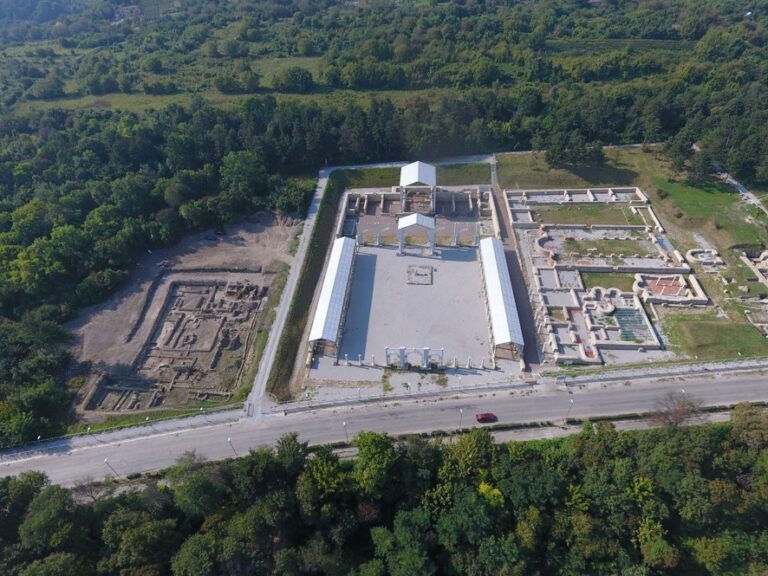
Rhizon (Montenegro) – modern Risan, investigations since 2001. Bronze Age settlement; Illyrian, Roman, medieval city; Ottoman and Venetian fortress.
Most important discoveries: Largest known Hellenistic hoard of coins struck for an Illyrian king Ballaeus, gold ring with a representation of Artemis, figurine of Sylenus, plaque with a representation of a Maenad (copy of artwork by Callimachos), store of Hellenistic amphorae, Hellenistic bathhouse, first known Illyrian palatial complex, remains of a temple of an Illyrian deity Medaurus, Greek inscription with the name of Medaurus, new Roman mosaic.
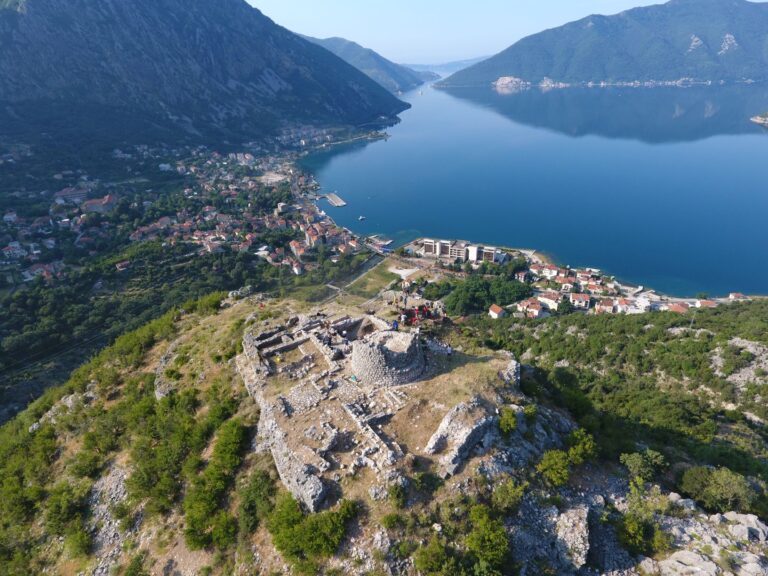
Scodra (Albania) – modern Shkodra, research since 2011. Capital of Illyria, Ottoman and Venetian fortress. Most important discoveries: coins from the First Crusade, one of the earliest Christian churches and a Turkish hammam discovered for the first time in Albanian territory – sets of Turkish vessels and Venetian majolica, hoard of Dubrovnik coins.
Bushat (Albania) – ancient name unknown – investigations since 2018. Bronze Age settlement, unknown Illyrian city.
Most important discoveries: fragments of monumental fortifications, more than 3 m wide, two city gates.
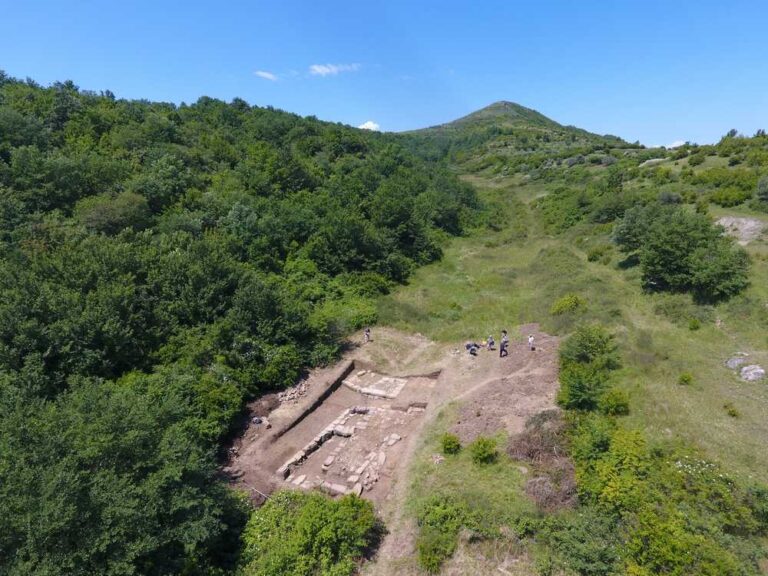
Tanais (Russia) – Greek colony; chronology: 3rd century BCE–5th century CE. Archaeological research in Tanais started in 1853. The University of Warsaw expedition initiated investigations in 1995, first in the area of the western necropolis, then, from 1999, in trench XXV located in the western part of the city of Tanais. 20 seasons of fieldwork have resulted in the discovery and clearing of a section of the fortification and inner city architecture, most importantly a fragment of a defensive ditch and a wooden-and-stone bridge—a unique structure unparalleled in the ancient world—crossing it to the city gate. The stone wall defenses included a proteichisma and a city gate. Investigations of the inner town revealed architecture and a grid of streets, also yielding (in the last few seasons of fieldwork) proof of a rebuilding in the 1st century CE; this information has led to a revision of earlier ideas about the effective destruction of the town by the Bosporus king Polemon I in the end of the 1st century BCE.
Konsulovskoje (Ukraine) – late Scythian stronghold; chronology: 1st century BCE–2nd century CE. First described in 1867 by A.P. Chirkov, member of the Odessa Society of Lovers of History and Antiquities. A more detailed description with a topographic plan was produced by W.I. Goszkiewicz, who carried out the first archaeological excavations at the site in 1913. Goszkiewicz uncovered a section of a stone defense wall about 19 m long, but his report was not detailed enough to be used in further research. Archaeologists from the Institute of the History of Material Culture of the Soviet Union’s Academy of Sciences surveyed the stronghold in the middle of the 20th century and excavated four trial trenches. Surveys and excavations were carried out next in the 1970s through 1990s by N.A. Gavryljuk and M.P. Olenkowski. In 2014, archaeologists from the Museum Preserve “Chortyca” tested the site, uncovering remains of residential stone architecture and fortifications. The first field season of the joint Ukrainian–Polish archaeological expedition took place in 2015 and the work has continued through today. So far the team has uncovered a citadel and the main part of the site, including some houses. The fortifications were constructed in the emplekton technique using broken limestone with a core of stone rubble bonded with tamped clay. The wall in the main part of the stronghold was flanked by stone towers. Another tower defended the gate leading into the citadel.
GRANTS:
Prof. dr hab. Piotr Dyczek (full professor): Novae. Legionary camp and late antique town–continuation of research. Barracks of the first cohort of the VIII Augusta and I Italica legions. Research program aimed at establishing the plan and layout of barracks of the VIII Augusta and I Italica legions (most probably first cohort) in the scamnum located east of the principia in Novae and establishing the plan of the later civil settlement in this part of the fort.
Dr hab. Renata Ciołek (university professor): Sensational coin hoard from Risan (Montenegro). Research on the “Dark Ages” in Illyria, grant no. 2012/05/B/HS3/03765
Funding: NCN OPUS-3 program
Institution: University of Warsaw; Antiquity of Southeastern Europe Research Center, Start date: 2013-01-29, End date: 2017-10-28
Dr hab. prof. UW Renata Ciołek (university professor): Circulation of coins in Moesia and Illyria. Case study on finds from Novae (Bulgaria) and Risan (Montenegro)
Grant: 2016/21/B/HS3/00021
Funding: NCN OPUS-11 program
Institution: University of Warsaw; Antiquity of Southeastern Europe Research Center, Start date: 2017-01-04 End date: 2022-01-03 Completed
Dr Marcin Matera: NCN: OPUS 11: Hellenistic architecture in Tanais: fortifications and adjacent urban area. Continuation of research, completed in 2020 (2016/21/B/HS3/03423)
Dr hab. Hubert Kowalski: NPRH grant: Reconstruction and exposition of fragments of Vasa residences discovered at the bottom of the Vistula River. Recovered national heritage within the frame of interdisciplinary investigations of the river bottom, PI,
Project: 11H 13 0031 82
Funding: 700.000 PLN
Status: completed
Dr hab. Hubert Kowalski: NPRH grant, funded by the Ministry of Science and Higher Education: Reconstruction and study of scientific collections of the Zoological Cabinet of the University of Warsaw. From the 18th century Musaeum Polonicum to the National Nature Museum, PI
Project: 11H 18 0038 87
Funding: 1 445 142 PLN
Status: Start date 1.09.2020 – in progress
European programs
– Culture 2000 – investigations of the Roman limes, inscription of the Antonine Wall on the UNESCO World Heritage List.
– Tempus IV – launching in Albania and Kosovo a new teaching course on World Cultural Heritage, focused on the Balkans.
– EuroTech – development of conservation and documentation techniques for endangered archeological artifacts.
– PICASP – launching in countries around the Caspian Sea research and studies on their Cultural Heritage, teaching new documentation techniques and archaeological research.
About us:
Prof. dr hab. Piotr Dyczek (full professor)– director of the Department of Classical Archaeology
Specialization:
Aegean, Classical, Limes and Illyrian archaeology. Interdisciplinary research, ceramic studies, various aspects of spiritual life, material culture and provincial Roman art. Archaeological fieldwork methodology and techniques. Implementation of Polish and European research programs; member of scientific committees, among others: LRCW, CRPA, Roman Frontier Studies; scientific journals, among others, Oppidum, Iliria, Fervet Opus, corresponding member of the Bulgarian Academy of Sciences, corresponding member of DAI, Commission on Archaeology of Mediterranean Countries of the Polish Academy of Arts and Sciences, the Scientific Councils of the Institute of Mediterranean and Oriental Cultures and the State Ethnographic Museum.
dr hab. Renata Ciołek (university professor)
Specialization:
Roman, Greek and Illyrian numismatics, finds of ancient coins in the Mediterranean and Barbaricum, coin circulation in Moesia and Thrace, Illyrian minting, research grants concerning monetary circulation in Moesia, Thrace and Illyria, member of the Organizing Committee of the International Numismatic Congress, scholarship holder of, among others, DAAD, Lanckoroński Foundation, The Andrew W. Mellon Foundation, Foundation for Polish Science
Dr Marzena Łuszczewska
Specialization:
Archaeology of ancient Rome, imperial propaganda in Roman official and private art, material culture of antiquity, stone artifacts, architectural decoration
Dr Marcin Matera
Specialization:
Greek ceramic epigraphy, amphora studies, archaeology of the Black Sea littoral, cultural interactions on the fringes of the Greek oikumene, Greek colonization, material culture of antiquity, ancient poliorcetics, archaeological fieldwork techniques. Member of the Commission on Archaeology of Mediterranean Countries of the Polish Academy of Arts and Sciences
Dr hab. Marek Tycjan Olszewski
Office hours: academic year 2020/21: Wednesday 13.00–14.30
Bibliography and content in PDF form: https://uw.academia.edu/MarekTitienOlszewski
Most recent discoveries published in the media: ODKRYCIA OLSZEWSKI W MEDIACH
Specialization: contextual and interdisciplinary study of the visual arts in Classical Antiquity, ancient mosaic art in particular.
Work methods: interdisciplinary, micro-historical and cognitive. University of Warsaw and Sorbonne graduate. Mellon Postdoctoral Research Fellow twice. Membership in international scientific and administrative committees: journals, congresses and workshops: AIEMA, ‘Antioch Mosaics : Current Stand and Perspectives’, Bull.AIEMA, JMR, De Medio Aevo, Eikón Imago; UNESCO expert (saving the archaeological heritage of Syria), associate member of ASOR and ASCSA. Recent lectures in Padua, Paris and Thessaloniki. Currently research on Syrian mosaics in cooperation with the DGMA. Author of several dozen scientific discoveries, most recently identification of eight sundials on ancient mosaics, circumstances of discovery, date, founders and royal “benefactors” of the complex, establishing and development of one of the most important urban centers of antiquity in the Near East, Apamea on the Orontes, then the discovery of a representation of the oldest waterwheel (noria), discovery based on an antithesis, commonly used in antiquity, to confirm a research hypothesis that the mosaic from the House of Aion in Cyprus is a pictorial anti-Christian polemic.
Dr hab. Dariusz Szeląg
Teaching, academic year 2020/21:
– The little stabilization. Syria and Anatolia in the Iron Age before the Assyrian conquest, support classes, 30 hours (Semester I)
– Archaeology of the Ancient Near East, BA seminar, 60 hours (Semesters I/II)
– History and culture of Babylonia in the first millennium BCE, institute-wide lecture, 60 hours (Semesters I/II)
– Archaeology of the Near East, MA seminar, run together with Dr hab. K. Jakubiak, 30 hours (Semesters I/II)
– Implementation classes, 30 hours (Semester II)
